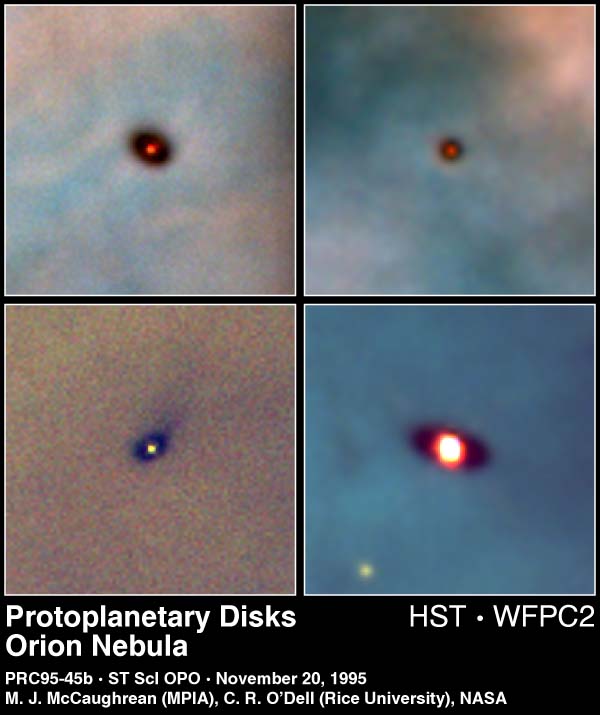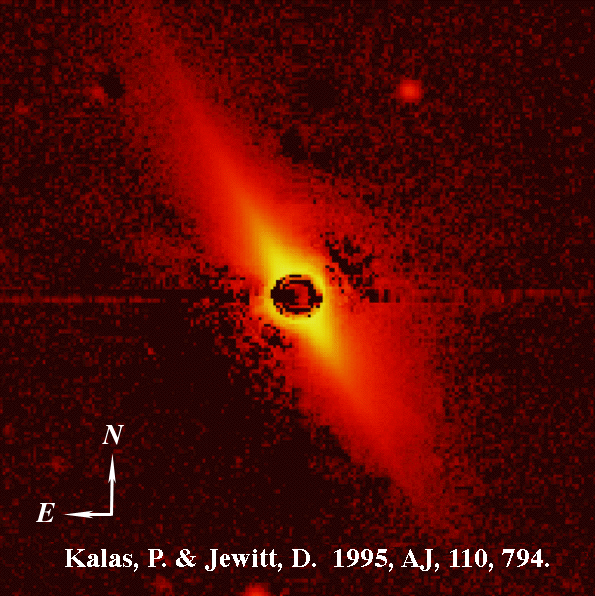 Proplyds in Orion |
 Beta Pictoris from MKO |
|---|
 Proplyds in Orion |
 Beta Pictoris from MKO |
|---|
The comets formed in the outer regions of the protoplanetary disk. The high
content of volatiles like water and carbon monoxide in the cometary nucleus
provides relatively direct
evidence for formation at low temperatures. Dynamical considerations are
compatible with the physical evidence: the majority of the comets in the Oort
Cloud were formed near and ejected by Uranus and Neptune. Comets now in the
Kuiper belt were formed near where we see them today.
If comets are icy planetesimals from the sun's protoplanetary disk, how
did they come to be where we see them today? Planetesimals in the vicinity
of the growing cores of the gas-giant planets were either absorbed by
those planets, or hurled away by close encounters with them. Planetesimals
ejected from the solar system by a kind of gravitational sling-shot were,
for the most part, lost to the interstellar medium of our galaxy. A small
fraction (maybe 10%) of those ejected were perturbed by passing stars
into the Oort Cloud. Planetesimals substantially
beyond the orbit of Neptune were immune to gravitational disturbances and
so were not ejected. These bodies are seen today in the
Kuiper Belt.
So, you can see that the comets in the Oort Cloud originated closer to
the sun than the objects of the Kuiper Belt. Since Long-Period Comets are
thought to be associated with the Oort Cloud and Short-Period Comets with
the Kuiper Belt, there is reason to expect that the LPCs formed at higher
temperatures than the SPCs. Chemical evidence for (or against) this idea
is presently being sought.
Evidence for disks around young stars is now compelling: they are observed
via their thermal emission and are seen
in projection against background
gas. When observed in projection, they have been (rather oddly)
named "proplyds".
More surprisingly, some relatively old, main-sequence stars like
Beta Pictoris also exhibit circumstellar
disks. These older disks are unlikely to be accretion disks of the kind
present around T-Tauri stars. Instead, they must be continuously
regenerated, perhaps by sublimation of unseen comets or by collisions in
an unseen Kuiper Belt. Some nice images of
regenerated disks have been
compiled by
Paul Kalas.
 |
|
| Comet | Jewitt |
|---|